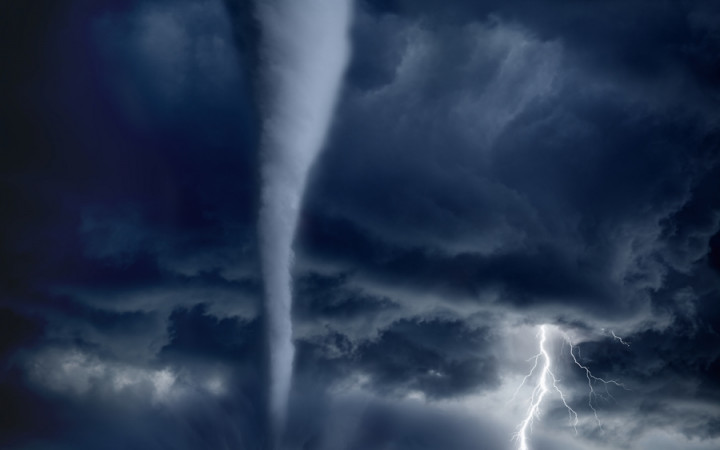Are you fascinated by those powerful, destructive storms some people call twisters? What are we talking about? Tornadoes, of course!
We don't experience tornadoes in Wonderopolis very often, but when we do, watch out! They can be violent and deadly. Although some people like to study tornadoes up close, whenever we see those storm clouds roll in and start twisting ominously, we head for shelter as quickly as possible.
Speaking of twisting ominously, some of our Wonder Friends have been WONDERing about how twisters twist. Is it always in the same direction? We thought that was an excellent question, so we looked into it.
The direction in which a tornado twists depends a lot upon which hemisphere you're in. In general, most tornadoes in the northern hemisphere rotate cyclonically, or counter-clockwise. Only around five percent of tornadoes in the northern hemisphere rotate clockwise, or anti-cyclonically. In the southern hemisphere, however, most tornadoes rotate clockwise.
So, the simple answer to our Wonder Friends' question is no, not all tornadoes twist in the same direction all the time. In the northern hemisphere, tornadoes occasionally rotate clockwise, or anti-cyclonically. These tornadoes tend to be water spouts, non-supercell land tornadoes, or anti-cyclonic whirls around the rim of a supercell's mesocyclone. In some extremely rare cases, meteorologists have even documented cases of both cyclonic and anti-cyclonic tornadoes at the same time under the same thunderstorm.
To understand why tornadoes usually twist in the same direction, but opposite directions in the northern vs. southern hemispheres, it's helpful to know a bit about something known as the Coriolis force or effect. The Coriolis effect can be very hard to understand, so we're going to explain it in very simple terms that are relevant to our discussion of tornadoes.
In a nutshell, the Earth's rotation around its axis causes winds in the northern hemisphere to deflect to the right, while winds in the southern hemisphere deflect to the left. This is known as the Coriolis effect, but it doesn't directly affect all air movement no matter how small. In general, the Coriolis effect only directly influences the spin direction of the Earth's biggest atmospheric and oceanographic circulation systems, such as the Gulf Stream, the jet stream, trade winds, and hurricanes.
Tornadoes are too small and begin and end too quickly to be directly influenced by the Coriolis effect. Instead, tornadoes tend to move in the same general direction of the low pressure systems that cause them. In the northern hemisphere, the low pressure systems that spawn tornadoes almost always rotate counter-clockwise because of the Coriolis effect, so that explains how a tornado's movement is indirectly affected by the Coriolis effect.




